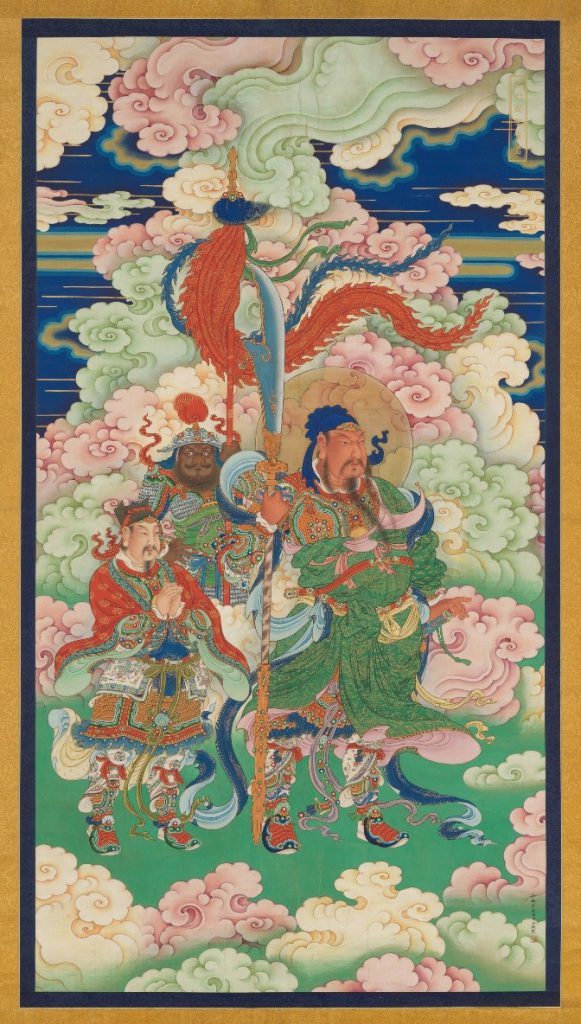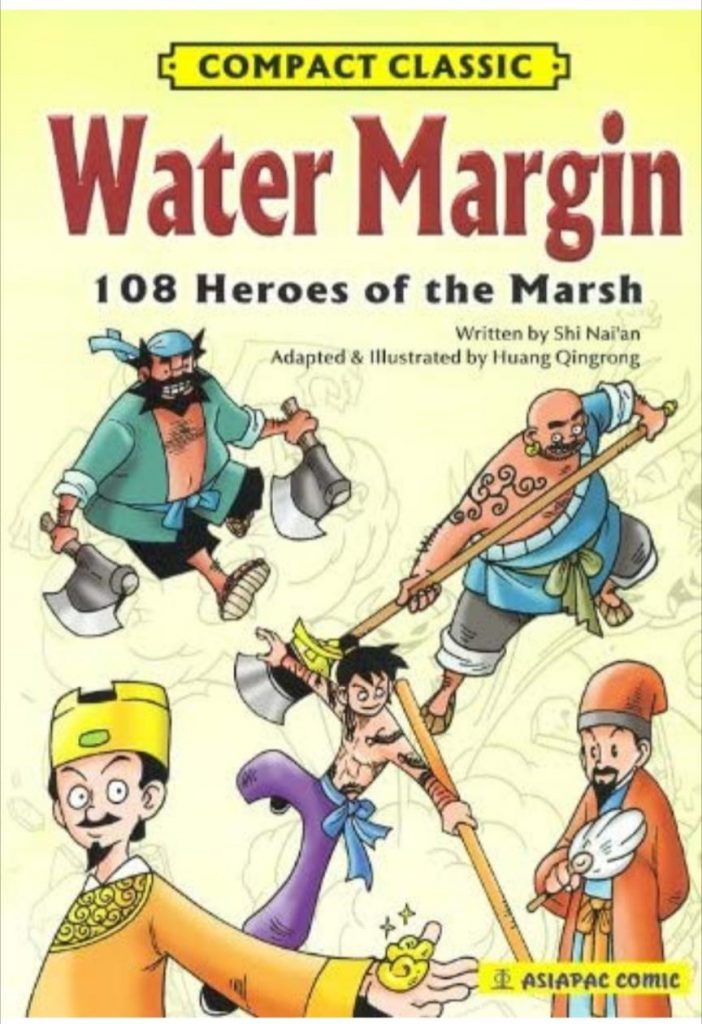By James Luce – Author of CHASING DAVIS – Feb. 2020
A dear friend and colleague at The 1990 Institute Executive Committee, James always thought that the word Friendshipology is not quite right. He suggests that I use G.I.F.T. The Global Institute for Friendship & Teaching – in lieu of Friendshipology
A SHORT FUN QUIZ TO GET THE COGNITIVE PROCESS GOING
Question One: Which word in the following set doesn’t belong ? Empathy, Love, Animosity, Loyalty
Answer: The second word in the set: Love
The reason love is the odd word out in this set is because all the other words are of ancient evolutionary origin and are all emotions genetically and behaviorally expressed by many non-human species over millions of years…whereas love in the romantic sense didn’t appear until at the earliest a mere 800-years-ago in the songs of wandering Provençal troubadours…and, of course, love is exclusive to our species.
Question Two: What is the definition of Friendship ?
Answer:
It depends on where you are in time. Today friendship is frequently defined as someone who is not a family member or lover for whom we feel affection/affinity/empathy/loyalty, with whom we share similar moral values, and on whom we rely for emotional support. You’ve heard that old saying “We chose our friends, but we’re given our families”. Yet 200,000-years-ago, when our fledgling species was struggling to genetically differentiate itself from other primates, friendship was exclusively limited to kin…members of our clan…on whom we relied for our very physical survival.
The definition of friendship also depends on where you are geographically. In some contemporary cultures, as in ancient times, kinship is the dominant, determining factor…such as the Xhosa in South Africa. In other cultures friendship may extend beyond kinship but is long in gestation and grand in its mutual obligations…such as in France. In the USA friendships are basically unrelated to kinship; many such relationships form instantaneously/transiently like bubbles blasting out of a champagne bottle…and are often soft, ambiguous connections that are much sought after in quantity but frequently short-shrifted in quality.
Question Three:
Are there any global, culturally universal common denominators determining friendship?
Answer:
Perhaps…but none that have yet been verified by any properly controlled study or investigation that I’ve found. However, there’s a recent, reasonably rigorous Oxford University anthropological study (1) that has isolated seven candidates for universally accepted moral values. This study investigated sixty different cultures representative of our global diversity. Because shared moral values is one of the common characteristics of friendship, these seven provide insight into a common denominator for how friendship can work globally…and why it’s imperative now that it must work.
The seven universal moral values are: help your family; help your group; return favors; be brave; defer to superiors; divide resources fairly; respect others’ property.
Given that all humans are genetically related and have been for over 200,000 years, it’s not merely coincidental that 29% of these shared characteristics are based on direct kinship; that 57% deal with cooperation within the group; and that 100% of them deal with preservation of the group…emphasizing the paramount importance of cooperation.
Perhaps surprisingly, these statistics are in stark contrast with the world’s major religions.
The three Abrahamic faiths (Judaism, Christianity, and Islam) all accept the same basic Ten Commandments.(2) Yet only one of the seven globally accepted moral characteristics (14%) is included in the Ten Commandments (#8: the admonition to not steal) and only 40% of the Commandments deals with group preservation.
Buddhism doesn’t have a “Ten Commandments” but it does have five traditional “rules” which are startlingly similar to the Ten: do not kill, do not steal, do not commit adultery, do not lie and don’t use intoxicants. Excluding the first four of the Ten (which deal with worshiping a specific deity and thus have no place in Buddhism), there’s an 80% overlap between the Abrahamic and Buddhist rules but, again, only a 14% overlap with the Universal Seven.
Hinduism’s Ten Commandments equivalent is difficult to identify, but traditionally the following seven are accepted as the “rules of behavior”: austerity, tranquillity, non-violence, non-adultery, non-corrupt, no stealing or coveting, no lying. These are similar to the Abrahamic and Buddhist set, but again there’s only a 14% overlap with the Universal Seven.
Thus, there’s no correlation between what people universally believe are the core characteristics of morality on the one hand and the rules advocated by their respective religions on the other. This perhaps helps to explain in part why interfaith and international friendships can be formed. More on this topic after the quiz.
Question Four: Which came first: Friendship or Controlled Use of Fire ?
Answer: Friendship came first…by at least 183 million years.
While there’s substantial evidence that our ancient ancestors (Australopithecus…Greek for “southern ape”) learned how to use fire about 1.7 million years ago, the origin of what became known as friendship (kin cooperation between social mammals) dates back as far as 185 million years ago to the first “pre-mammal” social species such as the tiny cat-like Kayentatherium. Thus, even in its most primitive form, friendship helped our very distant ancestors survive and thrive during the Age of Dinosaurs.
Humans didn’t invent friendship, Evolution did.
Some species don’t make friends – even though they practice kin cooperation
All species that live together in large groups cooperate with their kin, but not all such species make friends within their kinship group. For example, all social mammals make friends within their kinship group, but fish, ants, and bees do not. Why is that?
The search for an answer to this question dates back thousands of years. How was it, for example, that bees “know” how to collectively build and protect a hive, serve their queen, find pollen and return home, make honey, nurture the young…in short, cooperate for survival of the species? Certainly bees didn’t attend school for sixteen or more years as would a human require to learn similarly difficult skills.
After centuries of false starts and wild conjectures, in the late 19th-century the concept of “instinct” was thought to explain all these complex behaviors. An instinct is genetically programmed by evolution. The behaviors exhibited are complex, rigid, invariable, specific to each species, and, of course, unlearned. Humans, being special, didn’t have any instincts. Back then it was believed that our behaviors were too cerebral, too sophisticated, too learned, and too divinely inspired to be merely instinctual. Instead, as with all other animals, humans had various, amorphous “drives” (hunger, thirst, procreation, survival etc.)…but no instincts. Unlike bees, we had no rigid set of genetic instructions as to how to fulfil these drives…how to hunt, how to find water, how to find a mate, how to build a dwelling, how to invent the bow and arrow, or even how to change a diaper.
But science marches on.
By the late 20th-century we’d learned that all human behaviors (as well as the behaviors of all other species) were genetically determined but modified by both experience and the environment.(3) The difference between humans, other mammals, and insects is a matter of the relative degree of rigidity of the genetic impulses and the variable extent to which environment/experience impact behaviors.
Genetically controlled behaviors of bees are modified only by genetic mutations and are altered only by extremes in the environment such as fire, earthquake, drought, injury, and disease. In contrast, human behaviors are both modified and altered by relatively minor environmental/experiential variables (e.g. minor variations in upbringing, cultural expectations, and even temperature). Bees are like steel, whereas humans are like ice cubes. Steel remains solid so long as it isn’t placed in a blast furnace at 2,500º F. Ice cubes remain solid unless taken from the freezer and left on the kitchen counter, a difference of as little as 0.1º F.
As with all animals that live in large groups, bees must cooperate or go extinct. Bees don’t have to make friends in order to cooperate…so they don’t. There’s no genetic blueprint in bees coded for friendship or anything like it. Bees cooperate with each other because they have no choice or even an ability to make choices. Evolution is very stingy and doesn’t approve of wasted genes or wasted expenditure of metabolic energy.
Humans live in large groups, so we also must cooperate or go extinct. Our problem at the moment is that long ago we evolved a highly sophisticated choice-making mechanism called our cerebral cortex. Evolution expended an immense genetic fortune on this “choice box” because it was an extremely useful tool for survival…or at least it was for the first 200,000 years. Our species differentiated itself (filled its own unique environmental niche) in part by allowing each member of the species to make choices about almost everything…an extravagant capability unheard of even among our closely related primate relatives.
In terms of sheer numbers, our species is the most successful large mammal that has ever evolved.(4) In terms of the longevity of our species the answer is still out. Somewhere along the relatively short evolutionary road from our beginnings to where we are today we goofed, left something behind, took a wrong turn.
According to the Doomsday Clock (5), we “civilized” humans are closer to ending all life on this planet than at any time since the atomic bombs were dropped on Hiroshima and Nagasaki. Back then the Clock was set at seven minutes before midnight. On January 23, 2020 the Clock was reset to 100 seconds before midnight, the shortest time ever recorded.(6) You’re supposed to brush your teeth every morning for a longer time than that.
So what went gone wrong with our unique cerebral choice box?
Our species has faced extinction at least once before, when the Doomsday Clock (had it existed) would have been at five seconds before midnight as far as human life on Earth was concerned. Geneticists have determined that all humans today are the descendants of between 1,000 and 10,000 Homo sapiens, a tiny remnant of people who somehow survived some sort of catastrophe about 70,000-years-ago.(7) It’s uncertain what the cause was of this first near-extinction of our species, but it certainly wasn’t due to human activity.
Not true today.
Scientists moved the Clock setting this year due to a variety of changes over the last year, all of which are the caused in whole or in large part by human activity: climate change is speeding up, nuclear arms treaties are collapsing, population and forced immigration continues to rise, and global tensions between the major nuclear powers are heating up faster than our atmosphere and oceans.
Seventy-thousand-years-ago our species managed to survive because whatever the cause was it was transitory, insufficient to finish us off. We didn’t need any new skills to survive.
Again, not true today.
Unlike in the remote past, today we’re all in one big kinship group whether we like it or not, whether we know it or not. In the remote past all tribes were remotely scattered and self-sufficient. When tribes did meet and conflict (not cooperate) there was no loss of self-sufficiency. Each tribe could hunt and grow its own food, build its own housing, find its own water, make its own clothing, tools, weapons, and maintain its only source of energy…fire…for heat, light, and protection. All of these functions were the result of close kin cooperation. This cooperation was both ingrained (genetically based) and learned from our kin as children from the time we were babies. Cooperation came as naturally to our ancestors as was the tribe’s spoken language. The skills necessary for survival were known by everyone in the tribe. Some did better at some tasks than others, but everyone could pitch in at almost any task when needed. Tribe A did not need Tribe B to survive.
Once again, not true today.
In today’s world few of us know how to hunt or grow food, build our own housing, find our own water, make our own clothing, tools, weapons, or provide our own source of heat and light, or how to protect ourselves against bandits and bears. Even huge “kin” groups such as cities are collectively capable of performing only a few of these functions, but not all of them. Instead, we rely on something that is evolutionarily totally unnatural, totally without genetic basis…it’s a new form of cooperation held together, not be genes and lessons from our mother’s knee, but rather the glue is made up of complex and often indecipherable business contracts, labor/management agreements, legislation, treaties, international trade agreements, vast systems of international transportation, highly costly and incomprehensible-to-most-people scientific and engineering research and development done in a language few of us can understand, let alone duplicate. Tribal conflicts of brief duration with not-usually-lethal consequences have been replaced by ceaseless wars with weapons of devastating destruction. We no longer have shared rules of either peace or conflict.
Tribe A can no longer survive without Tribe B.
In summary, over the 10,000 of “civilizing” ourselves we’ve lost or severely repressed the ancient genetic compulsion to cooperate even with our immediate kinship group, let alone with an immense, scattered one. Things have deteriorated so badly that we now are forced to teach parents how to socialize their children and even teach teachers how to socialize their students. What a mess.
We must now turn to the other side of the cooperation coin…conflict, hatred and distrust of “different” tribes. Way back when, survival depended not only on intra-tribal cooperation, but also on communal distrust and fear of other tribes. Why? Because other tribes competed for the same resources. Genes in tribes that did not code for conflict-with-the-Others soon disappeared because anyone not so coded wasn’t likely to live long enough to reproduce. Infants were taught not only to cooperate with friends and family, but also to hate and kill those not of the tribe.
Over the millennia tribes grew into nations, each with their own language, religion, customs, and taboos. Conflict with the Other became ingrained not only in our genes but also in our cultures. As noted lyrically in that insightful song from South Pacific “You have to be taught to hate and fear, you’ve got to be taught from year to year…you’ve got to be taught to be afraid of people whose eyes are oddly made and people whose skin is a different shade…”
If our species is to survive into the next century we must immediately start teaching our children that we are all part of one vast Tribe of Humanity with its seven billion members and also teach them that intra-cooperation within that Tribe is as essential to us now as it was way back then for intra-cooperation between tiny little kinship groups of a few dozen people.
The difficulty is that we have never experienced millions of years of evolutionary coding for cooperation within something as big and diverse as the Tribe of Humanity. We must rely entirely on educating our young. It’s too late to teach the vast majority of adults whose mind and behaviour sets are too rigidly in place to be so fundamentally altered as to actually “cooperate with both thy close and distant neighbour” no matter what the race, creed, or cultural quirks that particular and extremely different neighbor may display.
How that crash course in global cooperation and friendship is to be implemented I leave to people who are wiser, younger, and more administratively competent than am I. A good start would be a fully funded and staffed organization operating under the name of Global Institute for Friendship and Teaching.
OBT, James
Footnotes:
- Seven Moral Rules Found All Around the World: links to two articles on the subject and the full study
http://www.ox.ac.uk/news/2019-02-11-seven-moral-rules-found-all around the world
https://www.mnn.com/lifestyle/responsible-living/blogs/universal-moral-rules
https://www.journals.uchicago.edu/doi/full/10.1086/701478
2. Islam views the Old and New Testaments to be earlier and genuine revelations from Allah.https://www.pbs.org/empires/islam/faithpeople.html
3. Details of this interaction are the topic of what’s known as The Nature v. Nurture Debate…that is, to what extent are behaviors controlled by our genes or by our environment/experiences.
https://www.simplypsychology.org/naturevsnurture.html
4. Nobody’s counted them, but it’s estimated that both rodents and bats outnumber humans. Excluding them, we’re number one in terms of population size. https://www.worldatlas.com/articles/most-populous-mammals-on-earth.html
5. The Doomsday Clock…its history https://www.miamiherald.com/news/nation-world/national/article239576533.html
6. The Doomsday Clock…its current setting https://thebulletin.org/doomsday-clock/current-time/
7. Whatever the cause, we’re descended from only a relatively few people: https://www.livescience.com/29130-toba-supervolcano-effects.html
Links to additional reading:
- The origins and meaning of instinct, NCBI: https://www.ncbi.nlm.nih.gov/pmc/articles/PMC5182125/
- The history of friendship and why it’s important: https://www.huffingtonpost.co.uk/2014/02/10/history-of-friendship-evolution_n_4743572.html?guccounter=1&guce_referrer=aHR0cHM6Ly93d3cuZ29vZ2xlLmNvbS8&guce_referrer_sig=AQAAABNIy-p-E7HjFOOzE7zf60KJ39V5dfJu1DrErEvRSY11fZ-H2pgqbfdA87a8vL_HFYFOfp-LavM7yRAeMzp5Cp9EguzXjQ8sGuktpsNr9pGE0MLYrTAOJIRkq9Swb7WlSAqo6j3EK5xAfziI_ZfJxbncryyWPWGftEJyekRy05y8
- The evolution of friendship: https://www.americanscientist.org/article/the-evolution-of-friendship
- Variability of moral values globally: https://www.pewresearch.org/fact-tank/2014/04/15/whats-morally-acceptable-it-depends-on-where-in-the-world-you-live/
- The differences between Chinese and American business ethics: http://home.ubalt.edu/ntsbpitt/ethics.pdf





